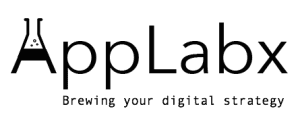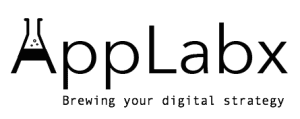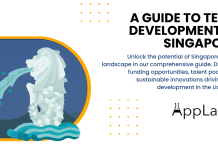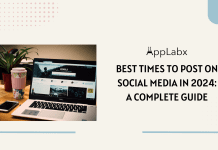Key Takeaways
- Core Web Vitals, mobile-first indexing, and AI-driven search dominate SEO strategies in the Netherlands in 2025.
- Local SEO, voice search, and Google Business Profile optimization are key to driving traffic and conversions.
- Compliance with GDPR, high-quality localized content, and long-term SEO investment ensure sustainable growth.
The digital economy of the Netherlands in 2025 is evolving at an extraordinary pace, placing search engine optimization (SEO) at the very center of how businesses grow, compete, and connect with their audiences. As one of Europe’s most advanced digital markets, the Netherlands is experiencing a rapid transformation in online search behavior, propelled by artificial intelligence (AI), mobile-first indexing, voice search, and stricter regulatory frameworks. Businesses operating in the Dutch market can no longer rely on outdated optimization tactics. Instead, they must embrace a highly adaptive, data-driven, and localized SEO strategy that aligns with new user expectations, algorithmic sophistication, and industry demands.

In this complex environment, SEO is no longer just a marketing function—it is a long-term investment that shapes brand authority, drives customer engagement, and fuels digital transformation. Whether an organization focuses on B2B, e-commerce, local services, or global operations, the Netherlands offers both vast opportunities and significant challenges in organic search performance.
A Transformative Digital Landscape in the Netherlands
- High Digital Penetration and Competitive Market
- The Netherlands remains one of Europe’s most digitally mature economies, with over 96% internet penetration and a tech-savvy population that spends a considerable portion of its daily activities online.
- Dutch users have increasingly sophisticated expectations for content quality, website speed, and personalization, prompting search engines to prioritize sites that demonstrate expertise, authoritativeness, and trustworthiness (E‑E‑A‑T).
- Mobile-First and Multi-Device Search Behavior
- Mobile search has surpassed desktop queries, driven by the widespread availability of 5G networks and the cultural shift toward on-the-go information consumption.
- Local searches on mobile devices dominate, with “near me” and hyper-localized searches experiencing exponential growth.
- The Rise of AI and Automation in Search
- Google’s AI-powered features, including AI Overviews and machine learning-driven ranking systems, are shaping how content is discovered and consumed.
- By 2025, AI personalization means search results in the Netherlands are increasingly unique to each user’s context, intent, and history.
Key Trends Reshaping SEO in the Dutch Market
- Local SEO and Hyper-Personalization
- Local SEO is now one of the most significant growth drivers for businesses with physical presence in the Netherlands, as proximity, relevancy, and trust signals dominate ranking factors.
- Google Business Profile optimization and active review management have become vital for visibility in local searches and Google Map Pack results.
- Voice Search and Conversational Queries
- Voice search has seen a dramatic surge, with natural language queries—often in Dutch—requiring content strategies that focus on conversational long-tail keywords and structured data to match search intent.
- Content Localization and Quality
- A direct translation of English content is insufficient for success in the Dutch market. Native, high-quality, culturally relevant content tailored to Dutch linguistic nuances is essential.
- Dutch audiences value practical, clear, and locally adapted content, making localized keyword research, semantic optimization, and authentic communication crucial.
- Core Web Vitals and Technical Excellence
- Websites targeting the Netherlands must meet strict technical benchmarks, with Core Web Vitals, mobile responsiveness, and security as non-negotiable requirements for strong organic visibility.
Economic Forces Driving SEO Growth
- Rising Investments in SEO
- Dutch companies are increasing their SEO budgets as part of broader digital transformation strategies, recognizing organic search as a cost-effective channel with one of the highest returns on investment.
- SMEs, supported by EU digitalization programs, are embracing SEO to compete with larger players in domestic and global markets.
- Maturing SEO Agency Landscape
- The Netherlands hosts a growing ecosystem of specialized SEO agencies, freelancers, and full-service marketing firms, catering to diverse business needs across technical SEO, content marketing, link building, and analytics-driven growth.
Regulatory and Compliance Considerations
- GDPR and Privacy-First SEO
- Strict data privacy regulations in the Netherlands require SEO strategies that prioritize transparency and ethical data practices.
- Compliance is a key trust signal for both users and search engines, and failure to adhere to GDPR regulations poses significant legal and reputational risks.
- Impact of E-commerce Regulations
- New regulations, including zero-emission zones, VAT compliance requirements, and minimum wage adjustments, indirectly affect digital marketing budgets and operational strategies.
Why Understanding SEO in the Netherlands Matters in 2025
For businesses aiming to thrive in the Dutch digital market, a nuanced understanding of SEO is essential. The interplay between advanced technologies, cultural preferences, regulatory frameworks, and consumer expectations makes the Netherlands a unique market where global strategies must be carefully adapted to local realities.
In 2025, SEO in the Netherlands is no longer simply about ranking on Google—it is about creating a comprehensive digital ecosystem that integrates high-quality content, robust technical infrastructure, data-driven decision-making, and compliance with a rapidly evolving regulatory landscape. Companies that adapt to these shifts will enjoy stronger brand authority, higher organic traffic, and sustainable growth in one of Europe’s most digitally progressive countries.
This report provides an in-depth examination of the state of SEO in the Netherlands in 2025, uncovering the trends, strategies, and opportunities shaping organic search success in this dynamic and highly competitive market.
But, before we venture further, we like to share who we are and what we do.
About AppLabx
From developing a solid marketing plan to creating compelling content, optimizing for search engines, leveraging social media, and utilizing paid advertising, AppLabx offers a comprehensive suite of digital marketing services designed to drive growth and profitability for your business.
At AppLabx, we understand that no two businesses are alike. That’s why we take a personalized approach to every project, working closely with our clients to understand their unique needs and goals, and developing customized strategies to help them achieve success.
If you need a digital consultation, then send in an inquiry here.
Or, send an email to [email protected] to get started.
The State of SEO in Netherlands in 2025
- Internet Penetration and User Demographics
- Search Engine Market Share
- Digital Engagement and Connectivity
- Impact of Google’s Core Updates
- Artificial Intelligence in Search
- Core Web Vitals and Page Experience
- Mobile-First Indexing
- Local SEO: Hyper-Personalization and Community Focus
- Content Strategy and Localization for the Dutch Market
- SEO Investment Trends and Market Size
- Return on Investment (ROI) of SEO
- SEO Service Costs and Agency Landscape
- Regulatory Environment and Compliance
1. Internet Penetration and User Demographics
Establishing the digital context of the Netherlands in 2025 is essential for crafting advanced SEO strategies. The country demonstrates one of the most mature digital markets globally, where connectivity, user behavior, and search engine reliance dictate how businesses achieve online visibility. The following sections offer a detailed, structured perspective on the evolving state of SEO in the Netherlands.
Digital Connectivity and Market Saturation
- Extensive Internet Penetration
- In early 2025, 18.1 million individuals in the Netherlands are active internet users.
- Internet penetration stands at 99%, making it one of the most connected countries globally.
- Online access increased modestly by 0.7% compared to 2024, indicating saturation.
- Virtually every consumer is online, positioning SEO as a primary business imperative rather than an optional tactic.
- Competitive Online Ecosystem
- Near-universal digital presence results in heightened competition for organic visibility.
- Online search has become the primary gateway to customer acquisition and retention.
Mobile Connectivity and Its SEO Implications
- Proliferation of Mobile Devices
- 25.3 million mobile connections, equivalent to 138% of the Dutch population, were recorded at the beginning of 2025.
- 99.6% of these are broadband (3G, 4G, 5G).
- Mobile connections grew by 7.2% from 2024 to 2025, showing the dominance of mobile browsing.
- Strategic Implications for SEO
- Mobile-first optimization is non-negotiable.
- Content strategies must:
- Be concise and scannable
- Prioritize fast interaction and immediate value delivery
- Include mobile-centric elements such as click-to-call buttons and simplified navigation
- Long-form content remains important but requires a strong mobile user experience as an entry point.
The Role of Social Media in Dutch Search Behavior
- Social Media Penetration
- 14.8 million active social media users, accounting for 80.9% of the population.
- 81.7% of all internet users use at least one platform.
- YouTube is dominant with 14.8 million users.
- Interplay Between Social Media and SEO
- Social platforms influence:
- Brand awareness
- Indirect SEO factors such as engagement signals, brand mentions, and sentiment
- An integrated strategy that aligns SEO efforts with active social media presence can enhance:
- Direct website traffic
- Content amplification
- Brand trustworthiness
- Social platforms influence:
Internet Speeds and Technical SEO Expectations
- High-Speed Connectivity
- Median mobile download speed: 146.56 Mbps (19.2% increase year-on-year).
- Median fixed broadband download speed: 197.11 Mbps.
- Impact on SEO Performance
- Dutch users expect:
- Seamless, fast-loading websites
- Optimized user experiences
- Technical SEO priorities:
- Improve Core Web Vitals (LCP, INP, CLS)
- Optimize images and scripts
- Employ caching strategies and CDNs
- A few seconds of delay risks high bounce rates, even with top rankings.
- Dutch users expect:
Key Digital Usage Metrics in the Netherlands – 2025
| Metric | Value (Jan 2025) |
|---|---|
| Internet Users | 18.1 million |
| Internet Penetration | 99.0% |
| Social Media Users | 14.8 million |
| Social Media Penetration | 80.9% of population |
| Mobile Connections | 25.3 million |
| Mobile Connection Penetration | 138% |
| Broadband Mobile Connections | 99.6% |
| Median Mobile Download Speed | 146.56 Mbps |
| Median Fixed Download Speed | 197.11 Mbps |
SEO Outlook in 2025 for the Netherlands
- Mature Market Dynamics
- SEO is not an optional marketing tool; it is an essential foundation for visibility and growth.
- Integrated Approach
- Combining technical excellence, mobile-first design, and active social media engagement is vital.
- Continuous Adaptation
- Given the rapid speed of technological evolution, brands must evolve their SEO strategies dynamically to maintain relevance.
2. Search Engine Market Share
Dominance of Google in the Dutch Search Landscape
- Unquestionable Leadership
- By mid-2025, Google continues to hold an unparalleled position in the Netherlands with a market share exceeding 88%.
- Market share data:
- June 2025: 88.65%
- May 2025: 88.95%
- This stable dominance highlights that optimizing for Google is the single most impactful strategy for achieving strong organic visibility in the Netherlands.
- Strategic Focus on Google
- Businesses prioritizing search visibility must primarily align with Google’s algorithmic framework, ranking signals, and AI-driven features.
- SEO efforts targeted at Google offer a substantially higher return on investment compared to alternative search platforms.
- Diversification to other engines should only be considered after achieving strong results on Google.
Performance of Other Search Engines
- Bing
- Holds 4.86% market share in June 2025 (5.05% in May 2025).
- Gains momentum through AI-enhanced search features integrated directly into results.
- Represents the second most relevant platform, providing niche opportunities, especially in AI-augmented search experiences.
- Yandex
- Accounts for 2.63% of the market in June 2025 (2.6% in May 2025).
- Attracts a specific audience segment, primarily due to its relevance in certain language and community-driven searches.
- DuckDuckGo
- Maintains 2.2% market share in June 2025 (1.89% in May 2025).
- Preferred by users concerned with privacy-first search experiences.
- Offers potential opportunities for brands that emphasize trust, transparency, and privacy.
- Yahoo! and Ecosia
- Combined share of less than 1.5% (Yahoo! 0.75% and Ecosia 0.66%).
- These engines hold marginal influence, but may still benefit specialized campaigns focused on sustainability or legacy search user bases.
Insights into Google’s Domain Preferences
- Domain Breakdown (June 2025):
- google.com: 79.24% of search usage.
- google.nl: 8.12% of search usage.
- The preference for google.com demonstrates the broad reliance on global search queries that extend beyond national borders, emphasizing the importance of international SEO strategies alongside local optimization.
AI as a Competitive Differentiator
- Influence of AI in Search Evolution
- Bing’s market share gains are fueled by AI-driven capabilities (e.g., integrated summaries, conversational search).
- The rising user expectation for AI-enhanced results extends beyond Google, impacting strategies across multiple platforms.
- Strategic Recommendations for SEO Professionals
- Monitor cross-platform AI trends: Features that appear on smaller engines often shape future search experiences across dominant platforms.
- Optimize content for AI-driven results:
- Concise, authoritative, and factual responses.
- Structured data and schema implementation to enhance machine readability.
- Multimodal content (text, images, video) for broader AI-based indexing.
Table – Search Engine Market Share (Netherlands, June 2025)
| Search Engine | Market Share (%) |
|---|---|
| 88.65 | |
| Bing | 4.86 |
| Yandex | 2.63 |
| DuckDuckGo | 2.20 |
| Yahoo! | 0.75 |
| Ecosia | 0.66 |
Market Share Distribution – Visual Chart
Google: ████████████████████████████████████████████████████████████ 88.65%
Bing: ████ 4.86%
Yandex: ██ 2.63%
DuckDuckGo: ██ 2.20%
Yahoo!: ▌0.75%
Ecosia: ▌0.66%
SEO Outlook for 2025 in the Netherlands Based on Market Share
- Prioritize Google-first optimization as the foundation of all SEO strategies.
- Consider Bing’s AI-driven capabilities as a supplementary growth channel.
- Utilize structured, high-quality content to leverage emerging AI search experiences across platforms.
- Invest in international and local SEO approaches due to the Dutch preference for google.com over google.nl.
3. Digital Engagement and Connectivity
Evolving Patterns of Device Usage
- Mobile-First Trends with a Balanced Desktop Presence
- As of June 2025, 52.55% of all web traffic in the Netherlands originates from mobile devices, while 47.45% comes from desktop platforms.
- Compared to the global average mobile traffic share of 64.17%, the Netherlands demonstrates a strong mobile-first trend, but desktop usage remains significant.
- This balanced distribution highlights that:
- Mobile devices are central for day-to-day browsing and short-form content consumption.
- Desktop devices remain essential for tasks requiring detailed research, financial decision-making, complex tools, and extended reading sessions.
- Industries such as finance, B2B, academic research, and technical sectors still experience a considerable volume of traffic from desktop users.
- Strategic SEO Implications
- SEO strategies in the Netherlands must prioritize mobile-first indexing and responsive design while maintaining:
- Fully optimized desktop experiences for complex workflows.
- Adaptive design principles that ensure seamless performance on both device types.
- The approach must be device-agnostic rather than mobile-exclusive.
- SEO strategies in the Netherlands must prioritize mobile-first indexing and responsive design while maintaining:
Connection Speeds and User Expectations
- Exceptional Internet Speed Landscape
- Median download speeds in early 2025:
- Mobile: 146.56 Mbps
- Fixed Broadband: 197.11 Mbps
- These speeds contribute to heightened user expectations for instant page loads and smooth digital interactions.
- Median download speeds in early 2025:
- Core Web Vitals and Technical SEO
- Due to this high-speed environment, users in the Netherlands have minimal tolerance for delays.
- Impact of speed on SEO and user experience:
- Pages loading slowly, even by a few seconds, experience increased bounce rates and conversion loss.
- Core Web Vitals (LCP, INP, CLS) are not just ranking factors but crucial experience benchmarks.
- Technical SEO priorities include:
- Advanced image compression techniques.
- Code minification and deferred loading strategies.
- Implementation of Content Delivery Networks (CDNs) and caching systems to accelerate performance.
Social Media as a Catalyst for SEO
- Role of Social Media in Dutch Digital Behavior
- As of 2025, 14.8 million Dutch residents actively use social media, representing 81.7% of the total online population.
- Platforms such as YouTube dominate, attracting 14.8 million users.
- Social platforms serve as:
- Key discovery hubs for video and visual content.
- Engines for brand amplification and content sharing, influencing organic search indirectly.
- Indirect SEO Advantages
- Active engagement across social channels can:
- Drive referral traffic that is later indexed by search engines.
- Strengthen brand signals, which contribute to authority and trustworthiness in SERPs.
- Active engagement across social channels can:
Table – Netherlands Web Traffic Distribution (June 2025)
| Device | Share of Web Traffic (%) |
|---|---|
| Mobile | 52.55 |
| Desktop | 47.45 |
Chart – Web Traffic Distribution (Netherlands, June 2025)
Mobile: ██████████████████████████████ 52.55%
Desktop: ████████████████████████████ 47.45%
SEO Implications of Digital Engagement Trends
- Prioritize mobile-first SEO strategies while equally refining desktop usability.
- Continuously enhance technical SEO performance to meet high user expectations fostered by ultra-fast internet speeds.
- Integrate social media strategies into SEO frameworks, ensuring that content distributed across platforms aligns with search optimization objectives.
4. Impact of Google’s Core Updates
Transformation of Search Through Artificial Intelligence and Algorithm Refinement
- The year 2025 represents a pivotal moment for search engines in the Netherlands, where artificial intelligence, advanced machine learning models, and complex algorithm updates are collectively redefining how users discover and interact with information.
- These changes emphasize that SEO in 2025 is no longer limited to keyword optimization. It requires a deep focus on semantic relevance, trust signals, and content quality, in order to remain competitive in an environment dominated by intelligent ranking systems.
Impact of Google’s Mid-2025 Algorithmic Adjustments
- June 2025 Fluctuations in Search Visibility
- Between June 16 and June 18, tracking platforms such as SEMrush Sensor, Wincher, and SERPmetrics observed unprecedented fluctuations in search results:
- Strongest volatility since the March 2025 core update.
- Reports of substantial movement despite Google not confirming a named update.
- Some site owners reported declines in traffic without ranking drops, indicating a structural change in user interaction rather than ranking losses.
- Key insight: These adjustments highlight a deeper evolution in how results are presented and consumed, rather than just which sites are ranked.
- Between June 16 and June 18, tracking platforms such as SEMrush Sensor, Wincher, and SERPmetrics observed unprecedented fluctuations in search results:
The Role of MUVERA and the Graph Foundation Model (GFM)
- MUVERA – A New Retrieval Algorithm
- Announced June 25, 2025.
- Based on Multi-Vector via Fixed Dimensional Encodings (FDEs).
- Capabilities:
- 5–20x fewer candidate documents required to maintain recall accuracy.
- 32x reduction in memory footprint through advanced quantization.
- Impact: Increases retrieval efficiency, enabling faster and more accurate delivery of relevant content.
- Graph Foundation Model (GFM)
- Announced July 10, 2025.
- Applies graph machine learning techniques to:
- Classify nodes and edges (web documents, authors, links).
- Improve spam detection, link trustworthiness, and topic authority recognition.
- Gains:
- 3x – 40x improvements in average precision across relational data.
- Impact: Enhances zero-shot and few-shot learning, enabling the algorithm to identify trustworthy content patterns without large training datasets.
- Strategic SEO Implications
- MUVERA and GFM collectively push search beyond keyword matching, leading to:
- A semantic, contextual, and authority-driven ranking environment.
- Enhanced identification of credible sources through interlinked patterns.
- MUVERA and GFM collectively push search beyond keyword matching, leading to:
AI Overviews and Zero-Click Search Dynamics
- Shift in User Interaction
- The integration of AI Overviews (formerly SGE – Search Generative Experience) means:
- Users increasingly receive answers directly within the search interface.
- Click-through rates decline even as impressions rise, particularly for factual or knowledge-based queries.
- New SEO Objective:
- Securing visibility in AI Overviews and rich results becomes just as crucial as obtaining clicks.
- The integration of AI Overviews (formerly SGE – Search Generative Experience) means:
- Optimization Requirements
- To perform well in AI-driven results:
- Create concise, authoritative, and factual content that answers questions directly.
- Implement structured data and schema markup to help AI systems interpret context.
- Monitor zero-click engagement metrics and adapt strategies to reflect the reduced dependency on clicks.
- To perform well in AI-driven results:
Heightened Sensitivity in YMYL Sectors
- Industries Most Impacted
- Categories experiencing the greatest volatility:
- Finance
- Health
- News and Media
- Food and Product Reviews
- These are classified as YMYL (Your Money, Your Life) topics where accuracy and trust are paramount.
- Categories experiencing the greatest volatility:
- Required SEO Focus Areas
- Strengthening E-E-A-T (Experience, Expertise, Authoritativeness, Trustworthiness) signals:
- Detailed, well-cited content.
- Verified author credentials and bios.
- High-quality internal and external linking strategies.
- These factors ensure resilience as Google’s graph-based models detect manipulative tactics and prioritize authenticity.
- Strengthening E-E-A-T (Experience, Expertise, Authoritativeness, Trustworthiness) signals:
Matrix – Impact of Algorithmic Shifts on SEO Strategies (2025)
| Factor | Before 2025 | Post-June 2025 Evolution |
|---|---|---|
| Content Ranking | Heavily keyword-driven | Semantic, contextual, and authority-focused |
| SERP Click Dynamics | Clicks tied to top 10 rankings | Impressions high, clicks reduced due to AI Overviews |
| Algorithmic Focus | Core updates with pattern-based ranking | AI-driven retrieval (MUVERA) and graph learning (GFM) |
| SEO for YMYL Niches | Keyword authority and backlinks | E-E-A-T signals and trust-based relational patterns |
| Metrics for Success | CTR and ranking position | Visibility in snippets, impressions, zero-click engagement |
Chart – SERP Volatility (June 2025, Netherlands)
June 10-15: ████▌ Stable
June 16: ██████████████████ High Volatility
June 17: █████████████████████████ Extreme Volatility
June 18: █████████████████ High Volatility
June 19+: ████ Returning to Normal
Key Takeaways for Dutch SEO Professionals in 2025
- Focus on content quality, semantic richness, and trustworthiness rather than keyword stuffing.
- Adapt strategies to AI Overviews and zero-click environments.
- Recognize that graph-based learning models detect spam-like patterns, making manipulative tactics riskier.
- For YMYL industries, build credibility and authority through authorship transparency and robust references.
5. Artificial Intelligence in Search
Expanding Role of Artificial Intelligence in Search
- Artificial Intelligence has moved from being a supporting tool to becoming the core engine of modern search systems.
- In 2025, AI-driven models in search engines:
- Enhance content discovery by interpreting semantic meaning rather than relying solely on keywords.
- Improve ranking accuracy, filtering low-quality or manipulative content more effectively.
- Personalize user experiences through contextual understanding of intent and preferences.
- AI Content Penetration in Search Results
- AI-generated content now constitutes 19% of the top 20 search results on Google, a remarkable growth from just 2.3% in 2020.
- 91% of digital marketers worldwide have incorporated AI-driven methods in their content creation workflows.
- While AI aids in scalability and efficiency, it has also made quality, originality, and trust signals more critical for achieving visibility.
The Dutch Paradox: Advanced AI Expertise vs. Low Adoption
- AI Talent Concentration
- The Netherlands accounts for 8% of Europe’s AI expertise despite representing only 2.8% of its population.
- Amsterdam ranks 5th among European cities for AI professionals, housing over 7,000 specialists.
- However, there is a significant mismatch between expertise and adoption.
- Public Skepticism Towards AI
- Only 43% of Dutch consumers regularly use AI technologies, the lowest percentage in Europe.
- This stems from a cultural emphasis on AI ethics, transparency, and regulation, reflecting concerns about privacy and trustworthiness.
- For SEO, this skepticism implies that human-authored content and verified expertise carry significant weight with Dutch audiences.
SEO Implications of AI Skepticism
- Content Preferences
- Dutch users demonstrate a preference for:
- Authentic, human-written content
- Transparency regarding authorship and sources
- Thought leadership backed by personal or professional experience
- Businesses that overuse AI-generated material without review risk losing credibility.
- Dutch users demonstrate a preference for:
- Recommended SEO Strategies for the Netherlands
- Build strong E-E-A-T signals (Experience, Expertise, Authoritativeness, Trustworthiness) by:
- Using human editors and domain experts to refine AI-assisted content.
- Publishing original research, case studies, and thought leadership pieces.
- Highlighting clear author profiles and brand credentials.
- Combine AI tools for efficiency with a human-driven creative and ethical approach to resonate with Dutch audiences.
- Build strong E-E-A-T signals (Experience, Expertise, Authoritativeness, Trustworthiness) by:
Challenges in AI Adoption for Dutch Businesses
- Execution Gap Among SMEs
- Many small and medium enterprises (SMEs) in the Netherlands:
- Have slower adoption rates for AI tools.
- Lack internal expertise to deploy AI in marketing or SEO strategies.
- Public initiatives such as AINEd aim to close this gap, but:
- Large-scale benefits are not expected until post-2027, when trained graduates enter the workforce.
- Talent migration:
- Approximately 70% of Dutch AI specialists work in traditional industries or public sector roles.
- Many high-skilled experts migrate to Silicon Valley and other global hubs for better funding and innovation ecosystems.
- Many small and medium enterprises (SMEs) in the Netherlands:
- Opportunity for Competitive Advantage
- Early adopters of AI-powered SEO tools can gain a significant lead in the local market.
- Partnerships with international AI-SEO firms or cross-border collaborations can mitigate the domestic skills gap.
Matrix – AI Adoption and SEO in the Netherlands (2025)
| Aspect | Current Situation | SEO Implications |
|---|---|---|
| AI Expertise | Strong base (8% of EU talent) | Access to talent is available for strategic adoption. |
| Consumer Adoption | 43% regular usage (lowest in EU) | Focus on trust-building and transparent content. |
| AI Content in SERPs | 19% of Google’s top 20 results generated by AI | Need for authenticity and originality in content. |
| SME Digital Maturity | Slower adoption, delayed AI integration | Opportunity for early adopters to lead. |
| Regulatory Focus | Strong emphasis on ethics and compliance | Prioritize compliant, privacy-conscious strategies. |
Chart – Growth of AI-Generated Content in Google’s Top 20 Results
2020: 2.3% █
2021: 4.1% ██
2022: 6.5% ███
2023: 10.8% █████
2024: 14.2% ███████
2025: 19.0% ██████████
Key Strategic Recommendations for SEO in the Netherlands
- Blend AI-assisted workflows with human editorial judgment.
- Focus on trust signals and credibility rather than pure automation.
- Leverage advanced analytics, semantic search optimization, and ethical AI as competitive tools.
- Target brand visibility, expertise demonstration, and long-term authority building to appeal to an AI-skeptical but digitally mature Dutch market.
6. Core Web Vitals and Page Experience
The Strategic Role of Core Web Vitals in Dutch SEO
- In 2025, Core Web Vitals (CWV) continue to serve as a pivotal ranking signal in Google’s algorithm, making page experience an inseparable component of SEO success in the Netherlands.
- With the Dutch market characterized by exceptionally fast internet connectivity and digitally sophisticated users, expectations for seamless experiences are at an all-time high.
- CWV directly influences:
- Organic rankings
- User engagement
- Bounce rates
- Conversion rates
- Websites unable to meet these metrics risk losing both traffic and revenue despite strong keyword optimization.
Key Metrics Defining Core Web Vitals
- Largest Contentful Paint (LCP)
- Measures the time required to render the main page content.
- A benchmark of 2.5 seconds or less is considered optimal.
- Impact on SEO:
- Faster delivery improves first impressions, especially on mobile.
- Enhances engagement and retention rates.
- Interaction to Next Paint (INP)
- Evaluates responsiveness and user interactivity across an entire session.
- A good INP score reflects a website that reacts instantly to clicks, swipes, or other actions.
- Impact on SEO:
- Directly linked to user satisfaction, conversions, and trust.
- Poor responsiveness increases abandonment rates.
- Cumulative Layout Shift (CLS)
- Measures the stability of visual elements during page load.
- A low CLS indicates that elements stay in place, preventing accidental clicks.
- Impact on SEO:
- Reduces frustration caused by shifting content.
- Improves credibility and overall perceived quality of a website.
Optimization Strategies for CWV
- Improving LCP
- Utilize high-performance hosting and server-side caching.
- Optimize images (e.g., WebP formats, lazy loading).
- Minify CSS/JavaScript and leverage a Content Delivery Network (CDN).
- Enhancing INP
- Minimize or defer third-party scripts.
- Use lightweight frameworks/themes.
- Implement efficient event listeners to handle interactions faster.
- Reducing CLS
- Set fixed dimensions for images and embedded content.
- Allocate static space for ads and banners.
- Preload fonts and optimize CSS delivery to prevent content jumps.
The Dutch Hyvä Theme Success Story
- Hyvä Themes for Magento Websites
- Highly adopted within the Dutch e-commerce ecosystem due to their exceptional performance.
- Performance Impact:
- 95+ PageSpeed Insights scores for both desktop and mobile.
- Page load times reduced by up to 70% compared to traditional Magento themes.
- Business Outcomes:
- 28% decrease in bounce rates.
- 62% faster loading speeds than Luma-based stores.
- 35% average growth in organic traffic.
- Up to 20% improvement in conversion rates.
- These statistics confirm that investment in technical SEO and CWV optimization has a direct correlation with measurable business metrics, from traffic growth to revenue improvement.
Table – Impact of CWV Optimization (Hyvä vs. Luma)
| Metric | Hyvä-Based Sites | Luma-Based Sites | Impact |
|---|---|---|---|
| PageSpeed Score (Mobile/Desktop) | 95+ | 70–80 | +20–25 points |
| Page Load Speed | 70% faster | Baseline | Significant reduction |
| Bounce Rate | -28% | Baseline | Lower abandonment |
| Organic Traffic Growth | +35% | Baseline | Greater search visibility |
| Conversion Rate Improvement | Up to +20% | Baseline | Direct business gains |
Chart – Effect of Optimized Core Web Vitals on Key Metrics
Traffic Growth: ██████████████████████ +35%
Conversion Rates: ████████████ +20%
Bounce Rate Reduction: █████████████████ -28%
Page Load Speed: ██████████████████████ 70% Faster
SEO Implications for the Netherlands in 2025
- Performance and user experience are now as critical as content relevance.
- Brands must:
- Invest in CWV optimization as a fundamental SEO strategy.
- Position technical improvements not merely as compliance with Google, but as business drivers improving user trust, conversions, and retention.
- In a high-speed digital environment like the Netherlands, these factors can become the decisive edge in a competitive SEO landscape.
7. Mobile-First Indexing
Mobile-First Indexing as the Default Paradigm
- Mobile-first indexing is now the default standard for Google’s crawling, indexing, and ranking processes.
- As of July 5, 2024, Google’s algorithms rely primarily on the mobile version of a site as the authoritative source for both ranking signals and content evaluation.
- This update applies universally to all websites, irrespective of domain age, niche, or size.
- The policy is a direct response to the global shift towards mobile browsing:
- Global web traffic: 64.17% mobile
- Dutch web traffic (June 2025): 52.55% mobile vs. 47.45% desktop
- Although the Netherlands shows a more balanced split compared to the global trend, the dominance of mobile access in daily usage patterns has solidified mobile-first indexing as a non-negotiable aspect of modern SEO.
Strategic Imperatives for SEO in a Mobile-First Era
- Mobile as the Primary SEO Benchmark
- Websites that are not mobile-optimized will struggle to achieve visibility and rankings, regardless of desktop performance.
- Google evaluates content quality, structured data, page experience, and technical factors primarily from the mobile version.
- Designing for Mobile from the Ground Up
- Building a site with mobile-first architecture from the outset is more effective than attempting to retrofit an existing desktop-centric design.
- Businesses planning a redesign or new launch in the Netherlands must embed mobile-first principles into the core development process.
- Audit Focus Shift
- SEO audits must prioritize mobile versions:
- Identify missing structured data or internal links.
- Detect degraded user experiences, incomplete content, or unoptimized assets on mobile.
- Ensure parity between mobile and desktop versions.
- SEO audits must prioritize mobile versions:
Key Focus Areas for Mobile-First Optimization
- Consistent User Experience (UX)
- Adapt design for touchscreen interaction:
- Larger tap targets for buttons and menus
- Simplified navigation, collapsible menus, and clear CTAs
- Readable typography with sufficient spacing
- Optimize layout and formatting to prevent accidental taps and enhance usability.
- Adapt design for touchscreen interaction:
- Mobile-Friendly Content Structure
- Replace dense walls of text with scannable sections.
- Avoid overly complex internal linking (links should be easy to tap without zooming).
- Provide back-to-top buttons for long-form content.
- Optimized Images for Mobile
- Use square or vertical aspect ratios (9:16, 2:3, 4:5) that display well on mobile.
- Implement lazy loading and compressed formats (e.g., WebP) to improve speed.
- Technical and Structural Best Practices
- Ensure identical structured data is present on both mobile and desktop versions.
- Verify that Googlebot (smartphone agent) can fully access and crawl mobile content.
- Maintain content parity:
- If content exists on desktop but not on mobile, it will not be indexed or ranked.
- Canonical tags do not need adjustment, but the mobile version must reflect complete, accessible data.
Table – Mobile vs. Desktop Web Traffic (Netherlands, June 2025)
| Device | Traffic Share |
|---|---|
| Mobile | 52.55% |
| Desktop | 47.45% |
Matrix – Mobile-First Indexing vs. Traditional Desktop-First SEO
| Factor | Mobile-First SEO | Desktop-First SEO |
|---|---|---|
| Crawling and Indexing | Mobile version is primary source | Desktop version is primary source (obsolete) |
| Ranking Signals | Mobile page speed, UX, and CWV metrics dominate | Desktop metrics secondary |
| Content Focus | Concise, scannable, visually stable on small screens | Longer-form, less optimized for mobile |
| Structured Data Priority | Must be fully implemented on mobile | Desktop structured data alone no longer adequate |
| Link and Asset Visibility | Content missing on mobile not indexed | Full visibility on desktop, limited on mobile |
SEO Implications for Dutch Businesses
- Mobile-first is no longer optional:
Businesses that treat mobile optimization as an afterthought will lose visibility, traffic, and conversions. - Investment priorities:
- Create mobile-optimized user journeys tailored for Dutch audiences.
- Ensure speed, accessibility, and usability on all devices, with mobile as the primary focus.
- Opportunities for Differentiation:
- Given that mobile adoption in the Netherlands, while dominant, is still less extreme than the global average, websites that deliver equally strong desktop and mobile experiences will outperform those that neglect desktop parity.
8. Local SEO: Hyper-Personalization and Community Focus
The Expanding Significance of Local Search in the Dutch Market
- Local SEO has evolved into a core pillar of digital visibility in the Netherlands, driven by:
- Changing consumer search behavior
- The increasing role of AI-generated local results
- Google’s emphasis on location-based personalization
- Search behavior trends shaping local SEO:
- 99% of internet users have researched a local business online
- 80% of users perform searches with local intent
- 14% of keyword queries explicitly seek local information
- “Near me” searches have risen by 900% in recent years
- By late 2025, 60% of local searches will include AI-driven results, presenting blended map listings and AI summaries
- Impact on business outcomes:
- 88% of smartphone users who search locally visit or contact a business within a day
- 78% of these searches result in a purchase
- Local mobile searches are growing 50% faster than global mobile searches
- For Dutch physical businesses, local SEO is directly linked to footfall and revenue generation
Role of Google Maps and the Local 3-Pack
- Google Maps statistics in the Netherlands:
- 88% of users depend on Google Maps for discovering local businesses
- 42% of local searchers click on results from the Google Map Pack
- 68% of users prefer clicking on results in the Local 3-Pack
- AI’s impact on Maps visibility:
- Increasing AI integration in Maps results means businesses must:
- Provide accurate, comprehensive, and hyper-local information
- Match contextual user intent beyond keyword optimization
- Prepare for AI Overviews, which may show summaries without generating clicks
- Increasing AI integration in Maps results means businesses must:
Optimizing Google Business Profiles (GBP)
- GBP as the foundation of local rankings
- 32% of SEO professionals cite GBP as the most crucial factor for appearing in the Google Map Pack
- A complete GBP listing results in:
- 2.7x more user trust
- 7x higher click-through rates
- Best practices for GBP in 2025:
- Maintain accurate NAP details (Name, Address, Phone)
- Add high-quality images and videos of services/products
- Post regular updates and offers
- Manage and respond to reviews professionally
- Include Q&A automation for faster responses
- Leverage video content (30+ second verified clips)
- Algorithm updates relevant to GBP:
- “Freshness Wins”: Profiles updated weekly receive 40% more clicks
- “Video Proof Matters”: Verified videos are favored in rankings
- Table – Key Factors Impacting GBP Performance
| Optimization Factor | Impact on Local SEO |
|---|---|
| Accurate NAP | Essential for ranking and trust |
| Weekly updates | 40% increase in engagement |
| Review management | Direct impact on visibility |
| Verified videos | Higher ranking potential |
| Q&A responses | Strong user interaction signals |
Voice Search and Conversational Search Optimization
- Voice search adoption in the Netherlands:
- By 2025, 55% of “near me” searches will be voice-based
- 72% of consumers use voice for local searches
- 20% of mobile queries come from voice interactions
- Strategic implications:
- Optimize for natural conversational language:
- Example: “Where is the closest bakery open right now?”
- Focus on long-tail question keywords and structured FAQ sections
- Use FAQ schema markup to increase voice assistant visibility
- Prioritize micro-location details, such as neighborhood names and nearby landmarks
- Optimize for natural conversational language:
Local Citations, Backlinks, and Trust Signals
- External signals shaping local rankings:
- Citations: Consistent NAP data across directories (Yelp, Bing Places, Apple Maps)
- Local backlinks: From Dutch media outlets, schools, event partnerships, or niche community blogs
- Quality vs. quantity: A single authoritative Dutch link can outperform dozens of irrelevant ones
- Review management as a ranking driver:
- 89% of consumers prefer businesses that respond to reviews
- 98% of users consult reviews before making local purchasing decisions
- 62% check multiple review sites before engaging
- Google’s algorithm favors video reviews exceeding 30 seconds in 2025
Matrix – Ranking Signals for Local SEO in the Netherlands (2025)
| Signal | Importance | SEO Impact |
|---|---|---|
| GBP optimization | Very High | Direct influence on Local 3-Pack |
| Reviews & responses | Very High | Trust, CTR, and Map Pack rankings |
| Voice-friendly content | High | Conversational query match |
| Local backlinks | High | Local authority boost |
| Hyper-local content | High | Matches neighborhood-specific queries |
| Consistent citations | Medium | Reinforces location credibility |
Actionable Takeaways for Dutch Businesses
- Treat local SEO as a revenue engine, not just a visibility tool
- Actively manage GBP profiles as living digital assets
- Adapt content strategies for voice and conversational search patterns
- Encourage reviews and integrate video reviews
- Build localized authority through partnerships and content targeting Dutch users at a granular level
9. Content Strategy and Localization for the Dutch Market
Localized Content as the Core of SEO Performance
- In 2025, successful SEO in the Netherlands demands much more than technical precision.
- Content must align with cultural relevance, linguistic accuracy, and user intent.
- Dutch users prioritize clarity, practicality, and authenticity, making generic translated content ineffective.
- Machine translations or non-native text can harm E-E-A-T (Experience, Expertise, Authoritativeness, Trustworthiness) signals and reduce organic visibility.
- Key strategies for Dutch content:
- Invest in native-level writers and professional localization services.
- Adapt content tone to Dutch sensibilities, emphasizing transparency, straightforwardness, and informative value.
- Avoid AI-only text generation; human editorial oversight remains essential to gain trust in a market known for AI skepticism.
Cultural and Linguistic Adaptation
- Importance of linguistic nuance:
- Google’s ranking algorithms increasingly rely on Latent Semantic Indexing (LSI).
- Dutch SEO requires:
- Using semantically related Dutch terms rather than literal English translations.
- Incorporating long-tail Dutch queries (e.g., “hoe groot wordt mijn appelboom”) instead of generic English equivalents.
- English keywords often fail to rank when directly translated due to different search intent and phrasing patterns.
- Implications:
- Conduct keyword research specific to Dutch search intent.
- Analyze competitor keyword strategies in the local Dutch SERPs.
- Optimize meta titles and descriptions in Dutch to improve click-through rates.
Image and Video Optimization: Visual Content as a Ranking Driver
- Rising influence of visual search:
- 63% of users who perform an image search end up visiting the source website.
- Search engines read signals like file names, ALT text, captions, and even text embedded within images.
- Best practices:
- Use relevant, high-quality, local imagery to increase contextual relevance.
- Optimize files with descriptive Dutch names and structured ALT attributes.
- Ensure fast-loading images using compression and modern formats such as WebP.
- Video optimization trends:
- Video search on platforms like YouTube is growing as a discovery channel.
- Use portrait or square formats (9:16, 2:3, 4:5) to optimize for mobile-first consumption.
- AI systems and Google’s AI Overviews increasingly favor multimedia assets for credibility and context.
Table – Key Visual SEO Factors in the Netherlands
| Element | Optimization Priority | SEO Impact |
|---|---|---|
| ALT text (Dutch) | Very High | Improves indexing and accessibility |
| Local imagery | High | Boosts local SERP relevance |
| Compressed image formats | High | Improves Core Web Vitals |
| Verified video content | Very High | Improves rankings and user trust |
Multilingual SEO in an International Market
- While Dutch remains essential, the high level of English fluency in the Netherlands means a dual-language SEO strategy is often advantageous.
- Websites must carefully decide between:
- ccTLD (.nl) for local dominance
- Subfolder (example.com/nl/) or subdomain (nl.example.com) strategies for balancing local and global rankings.
Localized Link Building and Domain Authority
- Backlink strategies must emphasize:
- Acquiring high-authority Dutch backlinks from local newspapers, organizations, or directories.
- Avoiding over-reliance on foreign backlinks that do not align with the Dutch audience.
- Building a local outbound linking structure by referencing Dutch sources when appropriate.
- Impact on rankings:
- A strong local link profile signals relevance to search engines.
- Dutch backlinks carry significantly higher value for local SERPs than general international links.
Matrix – Content and Localization SEO Factors (Netherlands 2025)
| Factor | Impact | Key Considerations |
|---|---|---|
| Native-level content | Very High | Trust and E-E-A-T strength |
| Cultural and linguistic adaptation | High | Direct impact on user engagement and CTR |
| Image and video SEO | High | Multimedia-rich experiences improve discoverability |
| Multilingual structure | Medium-High | Balancing local vs. international goals |
| Local backlinks | Very High | Boosts domain authority in Dutch SERPs |
Strategic Insights for 2025
- In the Netherlands, SEO success depends on more than keywords.
- Businesses that:
- Invest in human-driven, localized content strategies
- Optimize for multimedia, voice, and semantic search
- Build local link authority
- Deliver authentic, culturally precise messaging
will see higher organic visibility and trust among Dutch users.
10. SEO Investment Trends and Market Size
SEO Investment Trends and the Expanding Digital Market
- The state of SEO in the Netherlands during 2025 cannot be evaluated in isolation.
It exists within the broader context of accelerating digital advertising growth and a rapidly expanding digital transformation ecosystem. - Key growth dynamics in the global and local market:
- Global advertising market projection:
- Estimated to grow 4.9% in 2025, reaching USD 992 billion.
- Digital ad spend is forecasted to grow 7.9%, totaling USD 678.7 billion, accounting for 68.4% of total ad expenditure.
- Paid Search, closely aligned with SEO, will expand by 8.3% within this spend.
- Benelux advertising market, inclusive of the Netherlands, is projected to rise by at least 5% in 2025, reinforcing a regional pivot toward digital-first strategies.
- Global advertising market projection:
Digital Transformation in the Netherlands: A Foundation for SEO Growth
- Market size and trajectory:
- Dutch digital transformation market in 2025: USD 35.54 billion.
- Expected growth by 2030: USD 66.07 billion.
- CAGR (2025–2030): 13.20%.
- Growth drivers:
- Mandatory e-invoicing standards.
- Extensive 5G infrastructure deployment.
- EUR 1.7 billion in Digital Europe program funding.
- Implications for SEO:
- SEO evolves from a tactical marketing discipline to a core enabler of visibility, efficiency, and engagement within broader digitalization agendas.
- Budget allocations for SEO are increasingly integrated into digital transformation plans, rather than treated as isolated marketing costs.
The SME Opportunity in SEO
- SME-driven growth patterns:
- CAGR for SME participation in digital transformation: 16.2%.
- EUR 16.2 million in co-financing through Digital Europe initiatives specifically targeting SME projects.
- Ambitious national goal: 95% basic digitalization by 2030.
- Market behavior:
- Dutch SMEs face rising competition online, necessitating structured, high-impact SEO campaigns.
- Online shopping adoption in the Netherlands remains among the highest in the European Union, intensifying the need for visibility in organic results.
Comparative ROI: SEO vs. Paid Channels
- While Paid Search delivers quick results, the ROI profile of SEO surpasses all other digital channels:
Table – ROI Comparison Between SEO and Paid Channels (Netherlands 2025)
| Channel | Average ROI | Key Notes |
|---|---|---|
| SEO (Organic Search) | 22:1 | Sustainable growth, long-term equity, brand authority |
| Digital Marketing Average | 5:1 | Generalized returns, less cost-efficient |
| PPC / Paid Search | 6–8:1 (short-term) | Immediate visibility, but requires continuous reinvestment |
- Additional insights:
- 70% of marketers report higher sales results from SEO compared to PPC.
- PPC requires continuous spending to maintain presence, whereas SEO compounds value over time.
Strategic Recommendations for Dutch Businesses
- Prioritize long-term SEO strategies while balancing with PPC for short-term campaigns.
- Align SEO initiatives with digital transformation objectives, ensuring SEO is positioned as a business growth investment.
- Consider SEO as a cost reducer for paid campaigns over time, reducing dependence on fluctuating ad markets.
Market Insights: SEO as a Growth Catalyst
- In the Netherlands, SEO in 2025 is no longer a standalone digital tactic; it is deeply embedded into:
- E-commerce expansion strategies
- SME digital transformation agendas
- Customer engagement frameworks
- Long-term business sustainability models
11. Return on Investment (ROI) of SEO
The Growing Value of SEO as a Long-Term Investment
- SEO as a high-performing marketing asset:
- SEO continues to demonstrate a consistently superior return on investment compared to all other major marketing channels in the Netherlands.
- 49% of Dutch business owners identify SEO as delivering the best ROI across all marketing initiatives.
- 58.7% of executives report that the value of SEO ROI has been increasing steadily year over year, as organic search continues to drive qualified, cost-efficient leads.
- Performance metrics for ROI:
- Average ROI ratio:
- 22:1 – For every €1 invested in SEO, businesses can expect up to €22 in return.
- This is far ahead of the general digital marketing average of 5:1, where even highly optimized campaigns rarely exceed 10:1.
- Conversion rate benefits:
- Organic leads from SEO deliver a 14.6% conversion rate, dramatically higher than traditional outbound marketing (1.7%).
- Average overall SEO conversion rate: 2.4%.
- Time horizon for results:
- Breakeven timeline: 6–12 months for SEO initiatives, with technical SEO breaking even in as little as 6 months.
- Peak ROI timeframe: Years 2–3, when compounded effects from rankings, authority, and brand trust begin to deliver exponential growth.
- Average ROI ratio:
- Strategic implication:
- SEO should be treated as an asset-building activity rather than a quick-win marketing expense.
- Businesses that abandon campaigns too early risk missing out on the cumulative benefits that emerge after sustained effort.
Sector-Specific ROI Trends: High-Impact Niches
- Industries demonstrating superior SEO returns:
- Real Estate:
- ROAS (Return on Advertising Spend): 15.1
- Overall ROI: 1,389%
- Financial Services:
- ROI: 1,031%
- Legal Services:
- ROI: 526%
- Conversion Rate: 7.5% (among the highest across all industries)
- Medical Devices:
- ROAS: 12.8
- PCB Design & Manufacturing:
- ROAS: 12.5
- B2B SaaS:
- ROI: 702%
- Real Estate:
- Industries with moderate SEO returns:
- E-commerce:
- ROAS: 3.65
- Conversion Rate: 2.63% (general)
- Requires tight integration of SEO with conversion optimization techniques (e.g., speed-focused themes like Hyvä) to improve profitability.
- Education, Healthcare, and Business Services:
- Conversion rates range from 2% to 4%, with growth opportunities tied to content relevance and technical excellence.
- E-commerce:
Table – Comparative SEO ROI Across Industries
| Industry | ROAS | SEO-Driven ROI/Conversion |
|---|---|---|
| Real Estate | 15.1 | 1,389% ROI |
| Financial Services | – | 1,031% ROI |
| Medical Device | 12.8 | – |
| PCB Design & Manufacturing | 12.5 | – |
| B2B SaaS | – | 702% ROI |
| Legal Services | – | 526% ROI / 7.5% Conv. Rate |
| E-commerce | 3.65 | 2.63% Conv. Rate (general) |
| Education | – | 2.78% Conv. Rate (general) |
| Business Services | – | 2.39% Conv. Rate (general) |
| Technology | – | 2.55% Conv. Rate (general) |
| Healthcare & Medical | – | 3.39% Conv. Rate (general) |
| Hospitality | – | 4.74% Conv. Rate (general) |
SEO ROI Benchmarks vs Traditional Marketing
Chart – SEO vs Other Channels (Netherlands 2025)
ROI Ratio (euros returned per €1 invested)
SEO (Organic Search): ██████████████████████ 22:1
PPC / Paid Search: ████ 6–8:1
Digital Marketing: ███ 5:1
Traditional Media: ██ 3:1
- Key insight:
- SEO not only outperforms other channels in ROI but also retains its value over time, unlike paid campaigns that stop generating traffic once spend ceases.
Strategic Recommendations for Dutch Enterprises
- Adopt a multi-year SEO investment horizon:
- Avoid short-termism; expect to see optimal ROI after 24–36 months.
- Industry-specific SEO strategies:
- Real estate, finance, and legal sectors should consider aggressive SEO prioritization due to exceptionally high returns.
- E-commerce businesses should blend SEO with CRO (Conversion Rate Optimization) and technical enhancements for maximal gain.
- Agency specialization opportunities:
- There is significant potential for SEO agencies to specialize in high-ROI verticals where returns justify premium, tailored services.
12. SEO Service Costs and Agency Landscape
The Evolving Nature of SEO Investment in the Dutch Market
- Growing strategic emphasis on SEO budgets
- SEO has become a cornerstone of digital visibility in the Netherlands, prompting businesses to allocate larger budgets in 2025 compared to previous years.
- The increasing sophistication of Google’s algorithms and rising competition in local and national search markets has positioned SEO as a specialized investment rather than a commodity service.
- Mature Dutch companies and SMEs are embedding SEO into broader digital transformation budgets, viewing it as a critical lever for sustainable growth.
Global and Dutch SEO Cost Structures
- General global SEO pricing benchmarks:
- Typical SEO retainers range from $250 to $10,000+ per month, with 63% of companies worldwide spending under $5,000 monthly.
- Average spend:
- Small to medium-sized campaigns: $1,000 – $2,500 per month.
- Local SEO campaigns: $250 – $3,000 per month, depending on city size and market competition.
- Provider-type cost breakdown:
- Freelancers:
- Global: $250 – $1,000 monthly.
- Often suitable for startups and small-scale projects requiring limited scope.
- Agencies:
- Global: $1,000 – $5,000+ monthly.
- Costs increase for competitive industries (finance, legal, e-commerce) and for campaigns requiring specialist services such as technical SEO and multilingual strategies.
- Freelancers:
- Western European pricing as a proxy for the Netherlands:
- Agencies: €500 – €3,000 ($560 – $3,360) per month.
- Freelancers: €500 – €1,500 ($560 – $1,680) per month.
- Project-based pricing for Dutch agencies: Ranges from less than $10,000 to $199,999+, especially for enterprise-scale campaigns.
Table – Average Monthly SEO Service Costs (Global & Netherlands Context 2025)
| Provider Type / Region | Monthly Cost Range (USD) | Key Insight |
|---|---|---|
| Global Average (General) | $1,000 – $2,500 | Typical for SME-sized SEO programs |
| Global Freelancer | $250 – $1,000 | Lower cost, smaller scope projects |
| Global SEO Agency | $1,000 – >$5,000 | For multi-channel, competitive niches |
| Global Local SEO | $250 – $3,000 | Location-specific strategies |
| Germany (Agency) | $1,120 – $3,360 | Comparable to Dutch agency pricing |
| Germany (Freelancer) | $560 – $1,680 | Similar freelance market to NL |
| France (Agency) | $1,120 – $3,360 | Benchmark for Western Europe |
| France (Freelancer) | $560 – $1,680 | Insight into comparable Western EU costs |
The Dutch SEO Agency Ecosystem
- Diversity of agencies:
- Full-service digital marketing agencies: e.g., NinjaPromo, Zera Creative.
- Specialized SEO-focused agencies: e.g., Delante, RankFast, LASEO, SaaStorm (notable for B2B SaaS SEO).
- Boutique and local players: e.g., AnotherSight, Go Online, MarketEagle.
- Trends defining agency services in the Netherlands:
- Data-driven SEO methodologies, measurable KPIs, and performance-driven approaches.
- Increasing demand for local SEO expertise to handle Google Map Pack dominance and AI-powered localized search results.
- Growth of multilingual and technical SEO services for international brands with a Dutch presence.
Market Dynamics and Cost Evolution
- SEO pricing trends for 2025:
- 70% of agencies increased their prices in 2024 or plan to do so in 2025.
- Reasons for price escalation:
- Inflationary pressures (28%).
- Increasing skill specialization and expertise (25%).
- Rising operational costs (19%).
- Escalating market demand (13%).
- Implications for Dutch businesses:
- Shift from price-based decisions to value-based selection criteria.
- Companies now prioritize:
- Proven track record of results.
- Expertise in niche areas such as local SEO, technical audits, and AI-driven search optimization.
- Transparent ROI measurement and reporting.
Strategic Recommendations for Businesses
- Clarity of goals before engagement:
- Define objectives such as local visibility, national growth, e-commerce sales, or international expansion.
- Match budget allocation with competitive intensity of the market.
- Selecting the right agency:
- Avoid a “one-size-fits-all” approach to budgeting.
- Invest in agencies with:
- Specialization in relevant industries.
- Strong case studies in the Dutch digital ecosystem.
- Robust tracking tools and long-term growth strategies.
- Long-term perspective:
- Treat SEO as a strategic business asset that compounds in value over multiple years rather than a short-term cost.
13. Regulatory Environment and Compliance
The Influence of Regulation on SEO and Digital Strategy
- The Dutch and wider European regulatory landscape exerts a direct and long-term influence on SEO and digital marketing strategies.
- Compliance with data protection laws and e-commerce regulations is not only a legal requirement but also a trust-building mechanism that significantly shapes how brands are perceived in search environments.
- Non-compliance brings financial penalties and reputational risks, both of which undermine the benefits of SEO investments.
Impact of GDPR on SEO Practices
- Intensified enforcement and risk in 2025
- Regulators in Europe, including the Netherlands, are tightening GDPR compliance monitoring, with fines reaching up to €20 million or 4% of global turnover, whichever is higher.
- Since the introduction of GDPR, over 281,000 breaches have been reported, with the Netherlands accounting for 66,527 incidents, positioning it as the second highest in Europe.
- While only 12 fines have been imposed to date, this discrepancy suggests increased regulatory review and an eventual surge in enforcement actions.
- Key statistics influencing Dutch businesses
| GDPR Metric (as of 2025) | Value / Impact |
|---|---|
| Maximum Fine | €20M or 4% turnover |
| Data breaches reported in EU | 281,000+ |
| Data breaches reported in the Netherlands | 66,527 |
| Number of fines in the Netherlands | 12 |
| Impact on CAGR for Digital Transformation Market | -1.8% |
- Personal liability and corporate governance
- Business executives and data officers face personal accountability for breaches.
- Recent examples include a €30.5M fine for misuse of sensitive data by an AI firm, with direct consequences for its leadership.
- Global data handling complexities
- The Schrems II ruling has made transatlantic data transfers more complex, particularly as 92% of Western data remains hosted on US-based infrastructure.
- SEO strategy alignment with compliance
- A future-proof SEO approach requires:
- Transparent consent mechanisms (including compliant cookie banners).
- Reliance on first-party data.
- Clear privacy statements and secure data processing practices.
- Non-compliance not only risks penalties but erodes user trust, affecting click-through rates, time on site, and brand loyalty—all key behavioral signals for search engines.
- A future-proof SEO approach requires:
Dutch E-commerce Regulations Shaping the 2025 SEO Environment
- Zero-Emission Zones and Logistics Implications
- Starting January 1, 2025, 26 municipalities, including Amsterdam, Rotterdam, The Hague, and Utrecht, will enforce zero-emission logistics zones.
- Businesses using non-compliant delivery vehicles face increased costs for green alternatives, yet gain an opportunity for:
- Sustainable branding.
- Building positive brand associations that influence SEO indirectly through higher trust signals and improved user sentiment.
- Reinstated VAT E-commerce Penalties
- The EU’s 2021 VAT e-commerce rules will be more strictly enforced in 2025.
- Late or inaccurate VAT payments will result in administrative fines, prompting companies to strengthen accounting systems, ensuring that financial resources are not diverted away from strategic marketing and SEO efforts.
- Economic and Taxation Adjustments
- Minimum wage increase to €14.06 per hour for employees aged 21+ will raise operational costs, affecting resource allocation.
- Reduction in SME profit exemption to 12.7% will lead to higher tax obligations, meaning SMEs will need to plan digital investments—including SEO—more strategically.
SEO Impact from Compliance and Regulation
- These factors, though not direct search ranking signals, significantly influence:
- Budget allocation for SEO campaigns.
- Operational resilience, which impacts the ability to maintain continuous SEO initiatives.
- Brand perception, which indirectly drives click-through rates, local citations, and review signals.
Matrix – Regulatory Factors Influencing SEO in the Netherlands (2025)
| Regulatory Factor | Direct SEO Impact | Indirect SEO Impact |
|---|---|---|
| GDPR Compliance | Trust, Data Transparency, Privacy Signals | Higher user trust → improved engagement metrics |
| Zero-Emission Zones | N/A | Brand authority through sustainability focus |
| VAT E-commerce Enforcement | N/A | Reduces financial flexibility, influences digital budgets |
| Wage & Tax Adjustments | N/A | May reduce SEO spending but encourages efficiency in strategy |
Strategic Guidance for Dutch Businesses
- Integrate compliance into SEO planning
- Consider GDPR audits and privacy-first digital marketing strategies as part of the SEO workflow.
- Leverage sustainability for SEO positioning
- Highlight eco-friendly logistics and carbon-neutral initiatives in content and structured data, appealing to Dutch audiences with strong environmental values.
- Financial planning for long-term SEO
- Anticipate increased operational costs in 2025 and ensure SEO budgets remain protected, viewing them as investments rather than expendable marketing spend.
Conclusion
The Dutch digital economy in 2025 stands as one of the most advanced and competitive landscapes in Europe. SEO in the Netherlands has evolved beyond traditional keyword rankings into an integrated, data-driven discipline that demands precision, cultural fluency, and adaptability. Businesses operating within this environment must recognize that search engine optimization has become not only a marketing function but also a critical pillar of brand credibility, digital transformation, and revenue growth.
At the heart of this evolution lies the increasing influence of artificial intelligence, machine learning, and hyper-local algorithms that now power search engines. The Netherlands, with its highly digitalized population, high mobile penetration rate, and reputation as a hub for technological innovation, has emerged as a testbed for these new capabilities. Search strategies in 2025 must align with this reality, combining technical excellence with strategic insights into user intent, local context, and content quality.
Key Themes Shaping Dutch SEO in 2025
- AI-Driven Search and Personalization:
- Search engines now deliver context-aware, AI-generated results, which means that success depends on a brand’s ability to provide authoritative, structured, and multifaceted content.
- AI Overviews increasingly dominate search real estate, requiring businesses to optimize for inclusion within summaries rather than relying solely on organic listings.
- Local SEO as a Primary Growth Channel:
- Dutch consumers continue to prioritize local intent in their searches. Businesses with a physical presence in the Netherlands must ensure Google Business Profile optimization, proactive review management, and hyper-local content strategies to capture high-conversion search traffic.
- Content Localization and Cultural Relevance:
- SEO is now a linguistic and cultural discipline as much as a technical one. Brands that localize content for Dutch preferences, tone, and values outperform those who rely on direct translation or generic approaches.
- Voice, Visual, and Video Search:
- A notable rise in voice queries, coupled with the increasing integration of visual and video search, has expanded the definition of SEO to include rich media optimization, mobile-first design, and structured FAQ-driven content strategies.
- Regulatory Compliance and Trust Signals:
- GDPR and related regulations demand that SEO strategies are underpinned by transparent data practices. Compliance builds trust, and trust now plays a measurable role in improving engagement metrics that search engines reward.
- Investment and ROI Prioritization:
- SEO delivers one of the highest ROI ratios in digital marketing. With conversion rates significantly outperforming traditional channels, companies are strategically increasing their budgets to ensure that SEO remains a long-term growth driver rather than a short-term experiment.
The Strategic Imperative for Businesses in 2025
For Dutch businesses and international companies entering the Netherlands, the strategic imperatives for SEO are clear:
- Treat SEO as a core pillar of digital transformation rather than a peripheral marketing tactic.
- Invest in expert-led, data-informed strategies that emphasize E-E-A-T (Experience, Expertise, Authoritativeness, and Trustworthiness).
- Continuously adapt to AI-driven search experiences, ensuring that both structured data and multimedia content are optimized for machine interpretation.
- Recognize the profound link between localization, user experience, and brand trust, which directly translates to stronger rankings, higher conversion rates, and enduring competitive advantage.
Future Outlook
The Dutch SEO ecosystem in 2025 reflects a market where innovation, regulation, and user behavior intersect. Over the coming years, it is expected that:
- AI-powered zero-click search experiences will dominate, shifting the focus from rankings to brand visibility across new AI surfaces.
- Local and niche search strategies will become even more critical as Dutch users demand personalized, real-time results.
- Content quality standards will continue to rise, as search engines refine algorithms to eliminate low-quality, generic content from results pages.
Businesses that understand these trends, allocate resources accordingly, and maintain agility will not only withstand the changes but also turn SEO into a competitive advantage that drives long-term growth in the Dutch market.
In essence, the state of SEO in the Netherlands in 2025 represents a mature, sophisticated digital environment that rewards strategic foresight, user-centric content, and technological adaptation. Organizations that prioritize AI-readiness, compliance, and localized expertise will secure their visibility, expand their reach, and build sustainable digital authority in one of Europe’s most progressive and competitive markets.
If you are looking for a top-class digital marketer, then book a free consultation slot here.
If you find this article useful, why not share it with your friends and business partners, and also leave a nice comment below?
We, at the AppLabx Research Team, strive to bring the latest and most meaningful data, guides, and statistics to your doorstep.
To get access to top-quality guides, click over to the AppLabx Blog.
People also ask
What are the key SEO trends shaping the Netherlands in 2025?
SEO in the Netherlands in 2025 is shaped by AI-driven search, mobile-first indexing, voice search growth, and local SEO optimization for hyper-personalized user intent.
How important is mobile-first indexing for Dutch websites in 2025?
Mobile-first indexing is essential in 2025 as Google prioritizes mobile versions for ranking. Sites optimized for mobile experience dominate Dutch search visibility.
Why is local SEO becoming more critical in the Netherlands?
Local SEO in the Netherlands drives traffic and sales as Dutch users rely heavily on “near me” searches and AI-enhanced local results for immediate services.
How does voice search affect SEO in the Netherlands?
Voice search impacts SEO by increasing conversational, long-tail keywords. Dutch businesses need to optimize for natural speech queries like “best bakery near me.”
What role does AI play in SEO in 2025 in the Netherlands?
AI influences search by generating AI overviews and personalized results, requiring Dutch businesses to provide high-quality, structured, and intent-based content.
Why is content localization important for SEO in the Netherlands?
Localized content resonates with Dutch audiences by addressing cultural nuances and language patterns, building trust and improving rankings in Dutch SERPs.
How can businesses optimize for AI-driven search in the Netherlands?
Businesses can optimize by providing structured data, using natural language, improving content quality, and ensuring E-E-A-T signals for AI search interpretation.
What are the most competitive industries for SEO in the Netherlands?
Real estate, e-commerce, finance, and B2B SaaS are highly competitive in Dutch SEO, with growing demand for technical SEO and specialized content strategies.
What impact does GDPR compliance have on SEO in the Netherlands?
GDPR compliance builds trust and prevents penalties. Secure data handling and transparent practices improve user experience, indirectly benefiting SEO performance.
How is video content influencing SEO in the Netherlands in 2025?
Video content improves rankings as Dutch audiences engage more with multimedia. Platforms like YouTube serve as secondary search engines driving organic traffic.
What is the average ROI of SEO in the Netherlands?
SEO offers an average ROI of 22:1 in 2025, outperforming paid ads and proving to be a long-term, sustainable investment for Dutch companies.
How long does it take to see SEO results in the Netherlands?
SEO results typically start appearing after 6 to 12 months, with stronger gains in the second and third years as strategies compound.
How much does SEO cost in the Netherlands?
SEO services in the Netherlands range from €500 to €3,000 monthly for agencies, with freelancers charging between €500 and €1,500 depending on competition.
What are the benefits of Google Business Profile optimization in 2025?
Optimizing Google Business Profiles increases visibility, improves local rankings, builds trust, and drives foot traffic for Dutch businesses.
Why are online reviews crucial for local SEO in the Netherlands?
Positive reviews and active responses increase trust, improve local rankings, and influence Dutch consumers’ purchasing decisions.
What strategies help Dutch businesses rank for voice search?
Businesses can rank by creating conversational FAQ content, adding schema markup, and including hyper-local keywords based on user intent.
What is the effect of zero-emission zones on e-commerce SEO in the Netherlands?
Zero-emission zones impact delivery logistics, but sustainable branding aligned with eco-friendly values can enhance trust signals that influence SEO.
How does multilingual SEO benefit businesses in the Netherlands?
Multilingual SEO helps reach Dutch and English-speaking audiences, broadening visibility and capturing international traffic.
Why is structured data important for SEO in 2025?
Structured data helps Google and AI understand page content, leading to better search visibility, rich snippets, and more relevant traffic.
How can SMEs in the Netherlands benefit from SEO?
SMEs can leverage SEO to compete with larger companies, enhance local visibility, attract customers, and build brand authority affordably.
What is the role of backlinks in Dutch SEO strategies?
High-quality Dutch backlinks from local sources boost authority and rankings, signaling relevance to Dutch audiences.
How is the Dutch regulatory environment affecting SEO in 2025?
Data privacy regulations and compliance costs affect business operations, making trust-building through transparent digital practices essential.
How can businesses prepare for AI Overviews in Dutch search results?
Businesses should produce high-quality, factually accurate, and user-focused content optimized for structured data and clear context.
What is the impact of social proof on SEO in the Netherlands?
Strong social proof through reviews, testimonials, and community engagement enhances click-through rates and user trust, improving SEO.
How do zero-click searches influence SEO strategies in the Netherlands?
Zero-click searches require brands to focus on featured snippets, FAQs, and structured answers to appear in results without a user needing to click.
What industries see the fastest SEO growth in the Netherlands?
Healthcare, legal services, and SaaS sectors see rapid SEO growth due to high demand for online research and trust-building content.
What are common mistakes businesses make in SEO in 2025?
Mistakes include ignoring mobile optimization, neglecting local SEO, failing to comply with GDPR, and producing low-quality or unlocalized content.
Why is E-E-A-T so critical for SEO in the Netherlands?
Expertise, Experience, Authoritativeness, and Trustworthiness are key to ranking higher, as Google prioritizes reliable content in Dutch search results.
What is the future outlook of SEO in the Netherlands?
SEO in the Netherlands is evolving toward AI-driven, localized, and multimedia-rich strategies, creating opportunities for brands investing early.
How can Dutch businesses integrate SEO with paid advertising?
Combining SEO with PPC creates a balanced strategy, where paid ads offer immediate results while SEO builds sustainable long-term growth.
Sources
gs.statcounter,
geotargetly,
techjury,
datareportal,
searchenginejournal,
immwit,
nostra.ai,
wsiworld,
developers.google,
brightvessel,
nitropack,
naspers,
seoprofy,
dentsu,
sibinfotech,
reportlinker,
ralfvanveen,
aureatelabs,
ai-glot,
indigoextra,
rebootonline,
cookieyes,
smithlaw,
blossomyourcontent,
northpennnow,
seeders,
agencies.semrush,
landingi,
clutch,
zeracreative,
seranking,
mordorintelligence,
digital-strategy.ec.europa




































